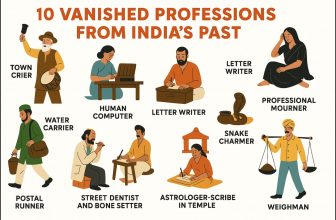When we think of inventions, the same names surface in textbooks and conversations: Edison gave us light, Bell connected us with the telephone, and Darwin explained life’s diversity.
These names are not wrong, but they’re not the whole story either. In reality, inventions often emerge through overlapping ideas, competing prototypes, and forgotten innovators whose work went unrecognized at the time. What follows are 22 inventions where history has simplified a complex tale into a single name, sometimes overlooking the true pioneers.
1. The Light Bulb
The electric light is one of the most famous symbols of innovation, and Thomas Edison is almost always credited with inventing it. In truth, Edison’s real achievement was making bulbs practical for long-term use and pairing them with a complete power distribution system. Earlier, Humphry Davy had created arc lamps, Warren de la Rue tested filament bulbs, and Joseph Swan in Britain patented a functional incandescent lamp. Edison and Swan eventually merged their companies because their patents overlapped, showing how invention is rarely the work of one man.
2. The Telephone
Alexander Graham Bell’s patent in 1876 made him a household name, but he wasn’t the only one chasing the dream of voice transmission. Antonio Meucci demonstrated a device years before but lacked funds for a patent. Elisha Gray filed a caveat describing a similar invention on the very day Bell submitted his paperwork. Courts ultimately upheld Bell’s claim, yet the broader record shows that the “invention” of the telephone was more contested than schoolbooks suggest.
3. Radio
Ask who invented radio, and most will say Marconi. He did build a system that proved wireless communication could work across long distances, but the groundwork was laid by others. Nikola Tesla, Oliver Lodge, and others had already filed patents and conducted experiments. In 1943, the U.S. Supreme Court invalidated some of Marconi’s key patents, citing Tesla’s and others’ prior work. The decision came after Tesla’s death, highlighting how fame and recognition can lag far behind reality.
4. The Airplane
The Wright brothers are rightly famous for their 1903 flights, recognized as the first controlled, sustained, powered flights. But they weren’t the only ones. In Brazil, Alberto Santos-Dumont flew publicly in 1906, becoming a hero in Europe. Gustav Whitehead, a German-American, may have flown in 1901, though evidence is disputed. What is clear is that while the Wrights cracked controlled flight, the story of early aviation is broader than one family from Ohio.
5. Movable-Type Printing
In the West, Johannes Gutenberg is celebrated for revolutionizing the printing press in the 15th century. Yet centuries earlier, Bi Sheng in China had developed movable clay type, and Korean printers created the world’s oldest surviving metal-type book, Jikji, in 1377. Gutenberg’s press transformed Europe, but the underlying idea had already been proven elsewhere, long before his workshop in Mainz.
6. The Computer
Charles Babbage is often called the father of the computer, and Alan Turing laid the theoretical groundwork of modern computing. Still, the first actual programmable digital machine was Konrad Zuse’s Z3, completed in 1941. Zuse’s electromechanical computer could run stored programs, a feature that makes it a true ancestor of today’s machines. And in the 1840s, Ada Lovelace had already written what is widely regarded as the first algorithm intended for a computer, though Babbage’s machine was never finished.
7. Television
Television wasn’t born from a single mind. Philo Farnsworth demonstrated the first fully electronic TV system in the late 1920s, which is why history often credits him. But John Logie Baird had showcased mechanical television in 1926, and Charles Francis Jenkins was sending crude images through the air even earlier. RCA eventually had to license Farnsworth’s patents, underscoring his priority, but the road to moving pictures in our living rooms was paved by many.
8. The Internet
We often attribute the internet to Vint Cerf and Bob Kahn, who indeed developed the TCP/IP protocol that makes networks talk to each other. Yet without packet switching, an idea independently pioneered by Paul Baran in the U.S. and Donald Davies in the U.K., the internet as we know it wouldn’t exist. Leonard Kleinrock’s work on data transmission and ARPANET’s development by Larry Roberts tied the pieces together. Cerf and Kahn’s role was crucial, but theirs was the final link in a much longer chain.
9. The World Wide Web
Tim Berners-Lee changed daily life by creating the World Wide Web in 1989, but he wasn’t the first to dream of linked information. Vannevar Bush described a “Memex” machine in 1945 that foreshadowed hyperlinked documents, and Ted Nelson coined “hypertext” in the 1960s. Berners-Lee built the tools that worked, the browser, the server, and the protocol, but earlier thinkers had already envisioned the concept.
10. The Automobile
Karl Benz’s 1886 Motorwagen is celebrated as the first automobile, but it wasn’t the earliest attempt to build a self-propelled vehicle. Nicolas-Joseph Cugnot built a steam-powered vehicle as early as 1769, and Siegfried Marcus tested motorized carts in the 19th century. Benz’s success lay in creating the first practical, mass-producible internal-combustion car, not in conceiving the very idea of road vehicles.
11. The Electric Car
Modern audiences often associate electric cars with Tesla, but these vehicles have a much older history. Robert Anderson built a crude electric carriage in the 1830s, Gustave Trouvé demonstrated an electric tricycle in Paris in 1881, and Thomas Parker developed electric cars in Britain during the 1880s. Far from being a modern idea, electric mobility is almost as old as the car itself.
12. Photography
Louis Daguerre popularized photography with his daguerreotype process in 1839, but the first permanent photograph came earlier. In 1826 or 1827, Joseph Nicéphore Niépce captured View from the Window at Le Gras using a technique called heliography. Daguerre refined the process and made it marketable, but Niépce’s image marks the true beginning of photography.
13. Motion Pictures
Thomas Edison is often tied to the origins of cinema through his kinetoscope, yet Louis Le Prince had already filmed moving pictures in 1888. His short film, Roundhay Garden Scene, predates Edison’s efforts. Later, the Lumière brothers advanced the technology further by projecting films for public audiences, establishing the cinema industry we recognize today.
14. Email
Ray Tomlinson’s 1971 message on ARPANET is rightly remembered as the birth of email in the modern sense, especially because he introduced the “@” symbol to separate user and host. But in 1978, Shiva Ayyadurai created a program named EMAIL that digitized office mail systems. His claim to having “invented email” is disputed, yet it reflects how the idea evolved in parallel in different contexts.
15. The Jet Engine
Frank Whittle in Britain and Hans von Ohain in Germany both developed working turbojet engines around the same time in the 1930s. Whittle patented his design earlier, while von Ohain’s version powered Germany’s Heinkel He 178, the first jet aircraft, in 1939. Today, both are regarded as co-inventors.
16. The Submarine
Cornelis Drebbel tested a basic submersible in the early 1600s, but it wasn’t until David Bushnell’s “Turtle” in 1776 that submarines saw combat. Later, Narcís Monturiol in Spain introduced new designs with advanced air systems in the 1860s. The modern submarine owes much to these overlooked pioneers.
17. Rocketry
Wernher von Braun is remembered for his role in Germany’s V-2 program and later NASA’s Saturn rockets, but the science of rocketry predates him. Konstantin Tsiolkovsky in Russia worked out the rocket equation in 1903, providing the theory for space travel. Robert Goddard launched the first liquid-fueled rocket in 1926, decades before von Braun’s work.
18. The Telephone Switchboard
While the spread of telephones is often tied to Bell’s companies, the concept of connecting multiple users through a switchboard came from Tivadar Puskás in the 1870s. His work made telephone networks scalable, laying the foundation for the communication systems we still depend on.
19. X-Rays
Wilhelm Röntgen discovered and published the existence of X-rays in 1895, earning the first Nobel Prize in Physics. But Nikola Tesla and Ivan Pulyui had already observed and even photographed X-ray–like images before Röntgen’s breakthrough. Because they didn’t publish first, their contributions were overshadowed.
20. The Microwave Oven
Percy Spencer stumbled upon the cooking power of microwaves in 1945 when a candy bar melted in his pocket while working with radar equipment. He went on to develop the first microwave oven for Raytheon. The theoretical groundwork for electromagnetic waves, however, had been laid decades earlier by James Clerk Maxwell and Heinrich Hertz.
21. Video Games
Ralph Baer is called the father of video games for his creation of the Magnavox Odyssey, the first home console. Yet William Higinbotham had built Tennis for Two in 1958, and Steve Russell programmed Spacewar! in 1962. These games predated Baer’s commercial success and show that gaming was born in laboratories, not living rooms.
22. Evolution by Natural Selection
Charles Darwin’s On the Origin of Species in 1859 changed biology forever. But Alfred Russel Wallace independently arrived at the same idea and sent Darwin a manuscript in 1858. Their findings were presented jointly, but Darwin’s book overshadowed Wallace. In truth, natural selection was a shared discovery.
Why So Many Names Get Lost
Misattributions often happen because:
- The patent system rewards those who file, not necessarily those who invent first.
- Public demonstrations and media attention make certain names stick.
- Historians simplify narratives into single heroes, leaving out collaborators.
Closing Remarks – Looking at Invention Differently
These stories show that inventions rarely emerge from a single lightning-bolt moment. They are built gradually, a mix of theories, prototypes, and refinements, often in different parts of the world.
The people we celebrate are often those who published first, patented effectively, or built a business around the idea. Looking at the overlooked contributors doesn’t take credit away from the famous names; it reminds us that innovation is collective, messy, and richer than a simplified legend.





